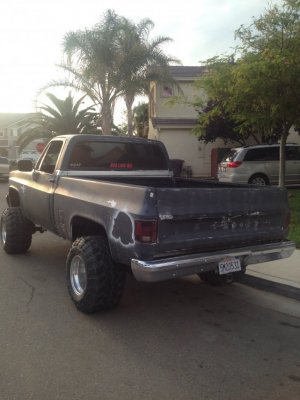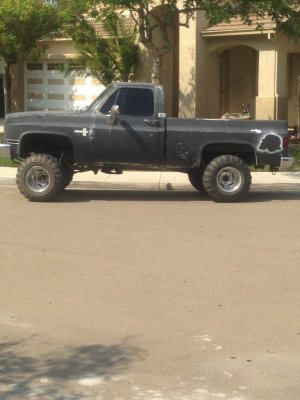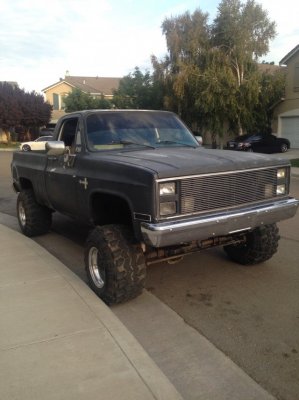There is a TSB on this and a whole procedure on how to correct it.
I don't have time to put it all together right now - I'll post it tonight. Here is how it starts:
Suspension - Vehicle Trim Height Low on One Side
NUMBER: 86-B-74
GROUP: 3D - Rear Suspension
DATE: April, 1986
SUBJECT: VEHICLE TRIM HEIGHT LOW ON ONE SIDE
MODELS: 1973-1986 C/K TRUCKS
A condition may exist on certain C/K trucks where the vehicle appears to lean, usually to the driver's side. The following procedure can be used to repair this condition:
SERVICE PROCEDURE
1. Check for proper tire size and inflation and correct if necessary.
2. The vehicle must be empty, placed on a level shop floor and jounced to release any residual frictional loading in the suspension.
You must be registered for see images attach
3. Measure from ground to sheet metal at the top center of the front wheel opening on each side of the vehicle (see Figure No. 1). Repeat on the rear wheel openings.
4. If little difference is found (3/4 inch or less side to side), check the bumper and exterior trim alignment. Misaligned bumpers and trim could cause the vehicle to appear to lean even if it does not. Note that a full fuel tank can cause 1/2 inch difference side to side at the front wheel opening compared to when the fuel tank is empty.
If more than 3/4 inch difference is found, suspension measurements should be made as described below while the vehicle is sitting on the level floor (not on a lift).
You must be registered for see images attach
5. In the front, take measurements on each side from the top of the lower control arm bracket to the front suspension crossmember flange (see Figure No. 2a) on C models, or from the top of spring anchor plate to bottom of frame (see Figure No. 2b) on K models.
You must be registered for see images attach
6. In the rear, measure from the top of rear axle tube to the bottom of frame (see Figure No. 3), on each side.
7. Compare side to side measurements. The difference between each side should not exceed 3/8 inch at either the front or rear. Note that a full fuel tank can cause 1/4 inch difference in the rear suspension height as compared to an empty fuel tank.




